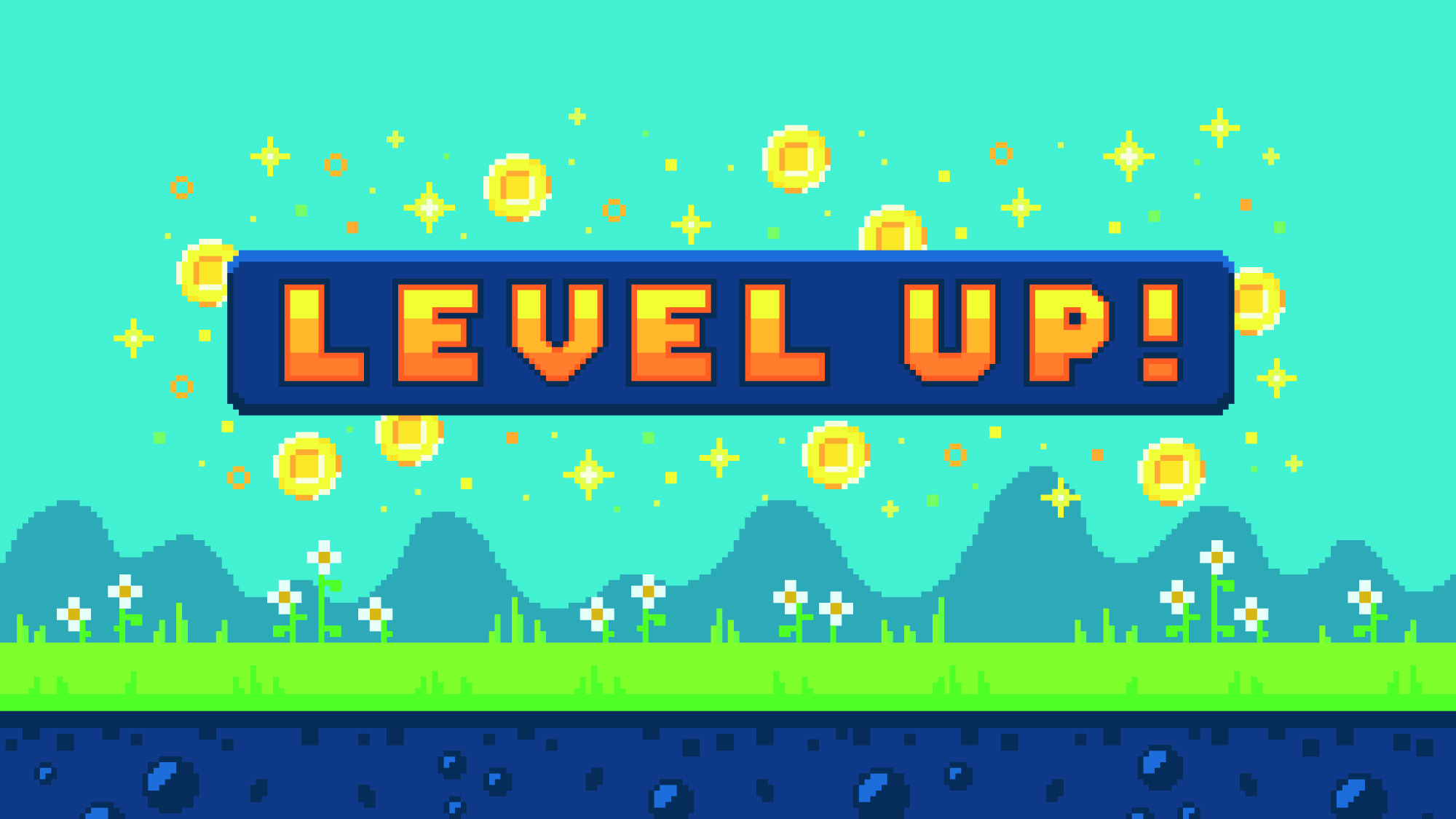Use AI to Personalize and Gamify Your L&D Ecosystem

To support an agile workforce in the face of constant change, learning and development (L&D) professionals are applying agile and lean business approaches to employee training. Often described as “adaptive learning,” the goal is to provide the precise information workers need when they need it.

Adaptive learning integrates AI-driven features for customized learning paths based on the performance and skill levels of the individual learner in alignment with a company’s goals. This provides just-in-time learning to employees “in the flow of work,” with an emphasis on the practical skills and knowledge they need to continue doing their jobs.
The Virtual Tutor
Sal Khan, innovator of the free, online school Khan Academy, notes in “How AI Could Save Education” studies that show one-to-one tutoring vastly improves a student’s performance in school. Personalized attention and lessons tailored to engage a particular learner turn average students into exceptional students. While it’s impractical to give every school student their own teacher, AI can help by presenting content in an engaging way, asking questions to discern each student’s learning processes and predicting where they may be making mistakes to guide them through correction.

Instead of just giving students answers, Khan Academy’s AI chatbot Khanmigo guides them on a personalized learning journey. It engages learners in a Socratic dialogue to help them use sound reasoning to find their own answers to problems. Khanmigo serves up content dynamically, depending on what the situation calls for. It might show a video or interact directly with a student in the persona of a historical figure, for instance, depending on which modalities and media the learner prefers. This level of personalized engagement aids in knowledge retention. AI can also use personalized tracking metrics to provide precise feedback on how students are doing and recommend other interactions.
Corporate learners can benefit from personalized lessons in much the same way. Imagine a finance officer learning English via digital training that serves up relevant, interesting, current content in the learner’s area of expertise at exactly their level of language proficiency. This training could also track their progress and help them identify knowledge gaps.
The Best Learning Solution Has a Social Dimension
For learning strategist Katja Schipperheijn, author of Learning Ecosystems, peer mentoring, employee-created content and social learning enhance the benefits of an AI-driven training program.

Increase interaction among employees by encouraging them to produce their own useful microlearning content. Teaching others helps students apply newly learned knowledge. Reward participation with badges or other gamification elements to increase engagement even more. Social interaction also adds to the robustness and effectiveness of your learning ecosystem by strengthening feedback loops.
Look for methods to make as much relevant information as possible accessible as quickly as possible through collaboration. Only in this way will knowledge flow through the ecosystem so that all those involved can grow together faster.
Katja Schipperheijn
A Learning Culture and a Growth Mindset For the Win
The best personalization efforts are collaborations between coaches, subject matter experts and learners. Continuous learning programs emphasize being able to find the relevant knowledge you need when you need it rather than memorizing facts. Schipperheijn urges organizations to craft enticing “LearnScapes” to draw learners in as they seek to upskill. Effective personalized “LearnScapes” combine company goals with the mutually shared values of their employees. No two organizations can use the same system because they face different challenges and situations.
I really feel in my heart of hearts, that the best way to future-proof yourself, your career, is to develop […] human skills – those skills give you the mental flexibility to evolve.
Barbara Jamelli-Sefchik and Adrian Reyes
Building customized learning paths take time. These efforts are most successful within a culture that already values learning and periodically analyzes employee feedback. All learners, especially adult learners, must believe they can learn. A growth mindset keeps them open to new ideas and experiential learning.
Immersive Learning
The immersive benefits of Augmented and Virtual Reality technologies (AR, VR) extend the possibilities for transferring knowledge beyond the restraints of location or time. One surgeon uses AR to allow medical students to virtually observe him perform surgery from the perspective of his own eyes. Simulations, interactions and games served up according to personalized preferences and goals engage all the senses. Learning fundamentals still apply to structuring material in chunks that make for easier retention, but learning in an immersive space makes new skills easier to pick up, says organizational consultant Koreen Olbrish Pagano in Immersive Learning. Virtual reality systems will make learning to drive less risky, for instance.
Author Robin Petterd, writing for Sprouts Lab, agrees and shows how adopting a “digital mind-set” when designing L&D programs unleashes new possibilities. Designers need to rethink the possibilities taking into account the convergence of artificial intelligence, the Internet of Things and virtual reality.

“Gamification” integrates game elements into work duties, upskilling and career development training to incentivize and reinforce certain behaviors and to increase engagement. This contributes to building better learning habits, say authors Naomi Baily and Iulia Istrate in their discussion of “Online Education Platforms.” They recommend a combination of chatbot nudges and friendly competition to keep employees engaged.
The key to using digital technologies in disrupting and modernizing learning is not just about copying; it’s about generating new approaches and new ideas.
Robin Petterd
Learning That Feels Like Playing
User interface designers integrated game elements into their systems and researched what motivates people to play and keep playing games, explains digital experience designer Sebastian Deterding in “9.5 Theses on the Power and Efficacy of Gamification.” They also integrated knowledge about persuasion techniques that incorporated role-play or keeping score and gamified simulations to teach specific skills.
How might we restructure a system to support intrinsic enjoyment, using game design as a lens?
Sebastian Deterding
To keep playing, game players need to feel a sense of autonomy and enjoyment along with the feeling they are meeting a challenge, one they can keep trying to overcome. Game features like leaderboards and rewards won’t matter if there’s no sense of fun. To accomplish this, people need to feel they are improving at something and interacting with others in meaningful ways. One potential downside is players can become obsessed with winning rather than benefitting from the broader positives of game-play, like developing competency or team-building.
Different Games for Different Goals
In The Gamification Revolution, authors Gabe Zichermann and Joselin Linder parse well-known models for gamification. In the “grand challenge,” a leader sets up a competition and invites others to participate in problem-solving. A “rapid feedback game” sets up ways to score as you play, which motivates people to keep playing.

In “simulation-discovery games,” designers gamify knowledge to teach others. “Status marathon” games reward high-quality content with peer recognition; this is the model social media uses. In a “commercial/negotiation” gamified system, players aim to win virtual currency – think Monopoly money or frequent flyer points. “Expressive games” engage users by encouraging their creativity.
Doing will always outperform reading as a way of skills acquisition, and gamification presents the best way to foster doing in a scalable way.
Gabe Zichermann and Joselin Linder
Because games offer an abstracted, simplified reality, players can more easily grasp larger concepts and readily see cause and effect, says author Karl M. Kapp in The Gamification of Learning and Instruction. The best training games require systematic reasoning and planning from players and can easily teach clusters of ideas or facts in a fun way that facilitates painless memorization. Simulations give players a chance to practice their skills; Simulations reduce accident rates for truck drivers and improve the interpersonal skills of business people. Layers of rules guide play through unfolding levels with evolving goals and difficulties which may integrate an overarching narrative.

“The hero’s journey,” with the hero acquiring skills as they accomplish tasks, is a blueprint for game structure. But mastery is the real goal. While only some people can win, many players can gain mastery. To emphasize mastery, Zichermann and Linder suggest:
- Set up a goal.
- Design milestones.
- Design feedback pathways to positively reinforce player improvement.
- Design ways for players to interact and positively reinforce each other.
- Add challenge and complexity as players level up.
- Design challenges or experiences peripheral to the main game to maintain engagement.
- Carefully design points and rewards.
When people are intrinsically motivated, they tend to be more aware of a wide range of phenomena, while giving careful attention to complexities, inconsistencies, novel events and unexpected possibilities.
Karl M. Kapp
Adding game elements to the pursuit of corporate goals keeps workers aware of strategic objectives, allows them to explore various future scenarios via simulation, and keeps them engaged in their projects. It can be useful for improving emotional and fluid intelligence, a person’s ability to apply problem-solving to new situations. Gamification can add to an employee’s sense of control over their work. Some examples:
- Target uses a gamified system of instant feedback for cashiers when they move their lines quickly.
- As authors David Edery and Ethan Mollick note in Changing the Game, L’Oreal uses its online e-Strat game to winnow down the pool of job applicants. Players work in small teams to solve problems in a virtual cosmetics company. Those who make it to final consideration are invited to Paris. L’Oreal has hired 600 employees through the use of games.
Employers want an agile workforce able to adapt to changing business demands. Employees want career development opportunities and engaging training to keep their skills sharp. Personalized and gamified learning systems offer a way to level up on these goals.
Learn more by exploring these summaries:













